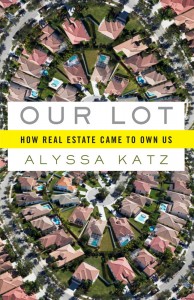 I was a psychology major in college which may explain a lot about my review tendencies. It also explains the utter fascination I have with books that delve into the psyche of people who have mental illnesses. Stuff: Compulsive Hoarding and the Meaning of Things grabbed me immediately, as I’ve developed an interest in hoarding, thanks to C. J. Omololu’s Dirty Little Secrets.
I was a psychology major in college which may explain a lot about my review tendencies. It also explains the utter fascination I have with books that delve into the psyche of people who have mental illnesses. Stuff: Compulsive Hoarding and the Meaning of Things grabbed me immediately, as I’ve developed an interest in hoarding, thanks to C. J. Omololu’s Dirty Little Secrets.
Stuff is a non-fiction work that dives into the mindsets and experiences of compulsive hoarders. Frost and Steketee are university professors of psychology and social work respectively, and their backgrounds inform the story they tell. Little research has been done on hoarding until quite recently, as many believed that rather than being its own mental illness, hoarding was a component of obsessive compulsive disorder (and indeed, many with ocd do have hoarding tendencies, but not everyone who hoards has ocd).
Throughout the book, we are introduced to a variety of individuals and their hoarding experiences. We begin at the very beginning with the famous Collyer mansion case in New York City that happened in 1947: two brothers who lived together died in their own filth. The hoarding was so bad that their building was believed uninhabitable and eventually was destroyed to make way for a park. From there, we are introduced to modern hoarders and learn about what their obsessions are while Frost and Steketee offer insight into what may be triggering the illness.
The reasoning behind hoarding is well fleshed, but what I appreciated most in this title was that there was no “one size fits all” diagnosis: Frost and Steketee do a great job of offering the multitude of possible triggers for hoarding and I think they do so without making this one of those books that convinces readers that they, too, suffer. Of particular interest to me in this was a discussion of the difference between collecting and hoarding, and it made me realize that I don’t have a single collection. For their purposes, collections are something that people have and have an orderly, well-reasoned, and logical organization or methodology behind. Think, for example, people who collect baseball cards — they put them into binders or display units that are meant for organization and safe keeping. People collect baseball cards because they love the sport, they enjoy collecting signatures, or they are holding on to them for resale purposes (among other reasons, of course). Hoarding, on the other hand, is when there is just accumulation without logical methodology or reason beyond just needing to have things. This is displayed through their character studies in the book.
Stuff is a highly readable book that moves relatively fast and is conducive to skimming and skipping around — something that I know some non-fiction readers require of the books they choose. The personal stories and the reasoning are interspersed but repeated enough that picking up at any chapter will not leave a reader lost. There is a variety of ages and genders represented in the examples.
And like any good non-fiction book, readers are treated to a list of resources in the book, as well as a chapter on identifying problems and seeking help for yourself or loved ones.
As many other reviews have mentioned, the style and tone of this book is reminiscent of Oliver Sacks, who is most well known for his book The Man Who Mistook His Wife for a Hat. It is written with knowledge and without judgement, meant to be accessible to a wide audience. I read Sacks’s classic in my high school psychology class, so I would find it easy to hand this book over to teenagers, as well, despite it being published for an adult audience. Since hoarding has been in the spotlight recently, this is a title that will find a wide readership, and it is for good reason.












